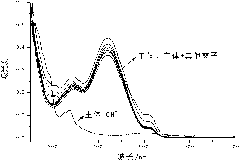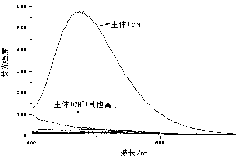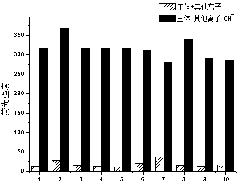Schiff base sensor molecule, its synthesis, and its application in fluorescent colorimetric detection of CN<-> in water
A sensor and Schiff base technology, applied in the field of anion detection, can solve the problems of complex sensor structure, long reaction time, restricting the popularization and use of sensor molecules, etc.
- Summary
- Abstract
- Description
- Claims
- Application Information
AI Technical Summary
Problems solved by technology
Method used
Image
Examples
Embodiment Construction
[0042] The synthesis of the sensor molecule of the present invention and the detection of CN in water will be carried out through specific examples below. - application is further explained.
[0043] 1. Sensor molecules Sz Synthesis: Put 6mmol of 2-aminobenzothiazole and 6mmol of 2-hydroxy-1-naphthaldehyde in a 100 mL round bottom flask, add 20 mL of ethanol, 1 mL of glacial acetic acid, and heat to reflux at 80°C on an oil bath for 6 hours. After the reaction was stopped, it was cooled to room temperature, and a crystalline substance precipitated out of the solution within 30 min; it was vacuum filtered and dried to obtain a yellow solid substance. The yield is 80% to 85%. The measured melting point is 216-217°C. NMR titration, high-resolution mass spectrometry, and infrared characterization data are the same as before.
[0044] 2. Load sensor molecules Sz CN - Preparation of test paper: Soak the filter paper with dilute hydrochloric acid, then wash it with distilled wa...
PUM
| Property | Measurement | Unit |
|---|---|---|
| melting point | aaaaa | aaaaa |
Abstract
Description
Claims
Application Information
 Login to View More
Login to View More - R&D
- Intellectual Property
- Life Sciences
- Materials
- Tech Scout
- Unparalleled Data Quality
- Higher Quality Content
- 60% Fewer Hallucinations
Browse by: Latest US Patents, China's latest patents, Technical Efficacy Thesaurus, Application Domain, Technology Topic, Popular Technical Reports.
© 2025 PatSnap. All rights reserved.Legal|Privacy policy|Modern Slavery Act Transparency Statement|Sitemap|About US| Contact US: help@patsnap.com



